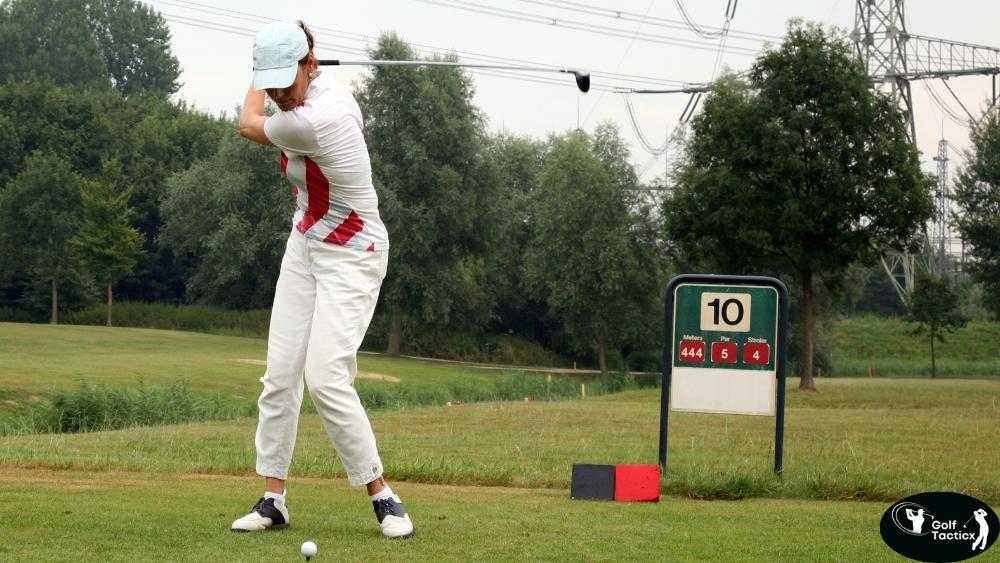In our previous post, we covered Controlling Trajectory in Chip Shots. Now, let’s delve into a fundamental aspect of the short game: developing world-class touch and feel. Mastering this skill can significantly enhance your performance around the greens, allowing you to navigate various situations with confidence and precision.
Whether you’re facing a tight lie, a soft green, or an uphill chip, the ability to judge distance and control your shot with finesse is what sets great golfers apart. To develop touch and feel in golf short game, it’s important to understand how different clubs react, how ball position affects flight, and how green speed influences roll.
Practicing under different conditions, like varying turf and weather, will help sharpen your instincts. With patience and consistent effort, you’ll soon notice better control, smoother tempo, and improved results. This guide will help you develop touch and feel in golf short game with simple, effective tips you can start using today.
Understanding Touch and Feel in Golf
In golf, “touch” refers to your ability to control the distance and trajectory of your shots, especially those played from around the greens. “Feel” involves your sensitivity to the club’s interaction with the ball and the ground, enabling you to make subtle adjustments for optimal results. Together, touch and feel are essential for executing delicate shots like chips, pitches, and delicate putts.
Why Touch and Feel Matter
Precision: Developing touch allows you to control shot distances accurately, reducing the risk of overshooting or leaving the ball short.
Adaptability: A keen sense of feel enables you to adjust to different lies, turf conditions, and weather, ensuring consistent performance.
Confidence: Mastering touch and feel around the greens boosts your confidence, leading to better decision-making and shot execution.
Scoring Opportunities: A refined short game gives you more chances to save par or even make birdies when approach shots miss the green. That edge often separates good rounds from great ones.
Reduced Mental Pressure: When you trust your ability to handle delicate shots, it takes stress off your long game. You’ll swing more freely knowing you can recover with confidence if needed.
Course Management: Players with great touch can choose smarter, safer options like laying up instead of forcing a risky shot because they know they can rely on their short game to get up and down efficiently.
Smooth Transition Across Clubs: Developing touch and feel helps you better understand how each wedge behaves, allowing seamless transitions between clubs depending on the shot requirement.
Key Elements of Developing Touch and Feel
Consistent Practice:
Regularly practicing various short game shots builds muscle memory, allowing for more consistent execution.
Focus on different distances and lies to develop versatility.
Mindful Practice:
Engage in deliberate practice by setting specific goals for each session.
Reflect on each shot to understand what worked and what didn’t, fostering improvement.
Visualization:
Before each shot, visualize the desired outcome, including trajectory and landing spot.
This mental rehearsal enhances focus and shot execution.
Feel-Based Drills:
- Incorporate drills that emphasize feel, such as chipping with your eyes closed to enhance sensory awareness.
- Practice hitting shots with different clubs to understand how each affects distance and trajectory.
Tempo and Rhythm Awareness:
Pay close attention to the tempo of your swing. A smooth, repeatable rhythm often leads to better control and consistency. Practicing with a metronome or counting in your head can help establish a steady pace for your short shots.
Grip Pressure Control:
Experiment with varying grip pressure to see how it impacts your touch. A lighter grip often provides better feedback and allows for softer, more precise shots especially in delicate situations like flop shots or short chips.
Environmental Adaptation:
Practice in different weather conditions and on various turf types. This helps you naturally adapt your touch to real-game environments, where moisture, wind, and firmness can greatly influence shot feel.
Use of Feedback Tools:
Leverage training aids or even simple tools like alignment sticks and impact tape to get immediate feedback. This can fine-tune your mechanics and reinforce good habits related to touch and control.
Developing Touch Through On-Course Scenarios
While drills and range practice are essential, real progress often comes from playing on the course. On-course situations provide unpredictable lies, varying green speeds, and pressure that’s hard to simulate during practice.
To develop touch and feel in golf short game more effectively, try playing rounds where you intentionally drop balls in tough spots, tight lies, slopes, or thick rough and experiment with different shots. This kind of situational practice trains your instincts and improves your ability to adapt in real-time, making your short game more reliable and intuitive.
Common Feel-Enhancing Drills You Can Try
Try these proven short game drills to improve your touch and feel:
- Ladder Drill – Chip to targets at increasing distances, focusing on precise control.
- One-Handed Chipping – Practice with your lead hand only to build better clubface awareness.
- Eyes-Closed Shots – Hit short chips with your eyes closed to rely on feel over sight.
- Club Switch Drill – Use a different club for each shot to understand how loft and bounce affect feel.
- Up-and-Down Challenge – Drop balls around the green and challenge yourself to get up and down within two strokes.
Comparing Short Game Clubs for Touch
Understanding how different clubs affect touch is crucial. Here’s a quick comparison to guide your selection:
| Club Type | Best Use | Touch Benefit |
|---|---|---|
| Pitching Wedge | Standard chips & bump-and-runs | Predictable roll, great for beginners |
| Gap Wedge | Mid-range pitches & spin control | Balanced feel between loft and distance |
| Sand Wedge | Bunker shots, high soft chips | Soft landing with controlled spin |
| Lob Wedge | Flop shots, tight pin positions | High trajectory, delicate touch under pressure |
Recommended Equipment for Beginners
Selecting the right wedge can significantly impact your ability to develop touch and feel around the greens. Here are some top-rated options suitable for beginners:
Cleveland CBX 2 Wedge
Designed with a cavity back for added forgiveness, this wedge is perfect for beginners seeking consistency.
Callaway Mack Daddy CB Wedge
Features a cavity back design and wide sole, making it easier to get under the ball.
Ping Glide 3.0 Wedge
Offers a variety of lofts and bounces, allowing customization to your playing style.
TaylorMade Milled Grind 2 Wedge
Known for its precision milling and consistent performance around the greens.
Wilson Staff Model Wedge
Provides a classic design with modern technology for improved spin and control.
Common Mistakes to Avoid
Overcomplicating Technique: Focusing too much on technical aspects can hinder natural feel.
Neglecting Short Game Practice: Overemphasizing full swing practice at the expense of short game can limit overall improvement.
Lack of Patience: Developing touch and feel takes time; be patient with your progress.
Using the Same Club for Every Shot: Relying only on one wedge for all short game situations limits your creativity and adaptability. Learning how to use different clubs for different lies and distances is key to developing better feel.
Ignoring Green Conditions: Not taking time to read the slope, grain, or speed of the green can lead to poor touch, especially on delicate chips or pitches. Observing the surface is just as important as executing the shot.
Rushing Through Practice: Hitting balls mindlessly or too quickly during practice sessions can prevent you from truly building feel. Slowing down and treating each shot like it’s on the course improves focus and results.
Skipping Post-Shot Analysis: Failing to evaluate your shots both good and bad means missing out on learning opportunities. Briefly reviewing your execution after each shot helps sharpen instincts over time.
Conclusion
Developing world-class touch and feel in your short game is a journey that requires dedication, mindful practice, and the right equipment. By focusing on consistent and deliberate practice, engaging in feel-based drills, and selecting suitable wedges, you can enhance your performance around the greens and enjoy the game even more.
Stay tuned for our next blog post, where we’ll explore Mastering Your Putting Stroke. Until then, keep practicing, and happy golfing!
















Leave a Reply